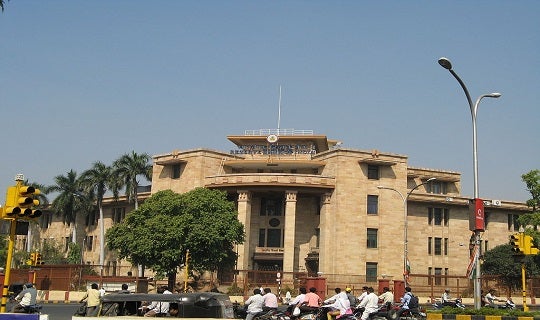Summary
It has been an accepted fact that the Indian government and the Reserve Bank of India (RBI) had very little elbow room to provide a package of measures which would serve as a stimulus for growth. The RBI, without losing out on its mandate to ensure inflation targeting, has announced a series of measures designed to provide much needed liquidity to sectors that were starved for the same. These are also sectors that have the potential to generate employment and create a demand impetus. The move has been applauded by all.
It is commonly believed that, in most jurisdictions, there is always a healthy tension between the fiscal and monetary authorities. The monetary authority is concerned about containing inflation and the fiscal authority is invariably pushing for growth. Such a phenomenon holds true for India too. In this background, the Budget presented by the government on 1 February 2020 for FY2020/21 contains certain steps to promote growth in the mid-term. However, the need of the hour is to take immediate steps to put disposable income in the hands of the rural population and the middle-income groups so that demand is generated. It seems this requirement is now being substantially met by the mid-term monetary policy declared by the Governor of the Reserve Bank of India (RBI) on 6 February 2020. This declaration brings the government and central bank on the same page. This paper proceeds to examine some of the policy steps declared by the RBI.
The RBI has expectedly left the policy rate unchanged. This accommodative stance of the RBI has signalled its readiness to cut rates in April 2020 if inflation declines. It has, however, taken certain progressive steps in the form of a stimulus package designed to stimulate growth. This package is expected to reduce the cost of money and, thereby, induce banks to provide credit to sectors such as real estate, macro, small and medium enterprises (MSME) and automobile. It has given relief to banks in maintaining the cash reserve ratio against loans for automobile, MSME and residential housing till 31 July 2020. The repo rate (repurchase rate or the key monetary policy rate at which the RBI lends to commercial banks) remains at 5.15 per cent, with the policy continuing to be accommodative with the objective of reviving growth. The real estate sector, possibly the largest source of employment, is presently caught in a tight cleft of unsold inventory and a huge debt overhang. The RBI has permitted an extension of the date of commercial operations of project loans for commercial real estate, which have been stymied due to factors beyond the control of developers, without downgrading the assets. This has been a long-felt requirement of the sector and needed to have been provided at least two years back as it would have served to unclog most of the liquidity requirements of the sector.
The other important sector which can reinvigorate growth and one that also provides gainful employment to a huge segment of society is the MSME sector. Banks have been allowed a one-time restructuring of loans given to MSMEs, which were in default but did not turn non-performing assets as on 1 February 2019. These accounts were not to be ‘provisioned’ as they were still technically standard. This one-time regulatory relaxation to MSMEs paying the Goods and Services Tax, and which were in default as on 1 January 2020, will permit them considerable flexibility to access credit, as they have time to complete the restructuring by December 31, 2020. This is a huge accommodation as, due to stress of debt overhang, these enterprises were caught in a vicious circle. They can now restructure and access further credit which will provide them a fair chance of restarting manufacturing activity.
The RBI has taken a rather bold step in opening a new window for long-term one-year and three-year tenure repo rate. This is a very major initiative as banks, which borrow from the RBI’s repo window, can now borrow at the unchanged rate of 5.15 per cent but for a much longer tenure of one to three years, as against overnight or fortnightly borrowing earlier. This will reduce the cost of borrowing of commercial banks. This policy change seems to be a cue from the European Central Bank which had announced similar long-term repos a few years back. This move by itself will inject ₹1 trillion (US$150 billion) into the system, a much-needed resource for a liquidity starved economy.
The central bank has clearly delivered beyond expectations. The RBI faced the same policy optimising constraint as the government had when it delivered the budget. However, while maintaining its primary responsibility in sight by keeping the policy rates unchanged, the RBI has demonstrated its support for growth. It has resorted to unconventional measures to provide a much-needed stimulus. Such a policy needs to be applauded. The RBI has focused on transmission and enhanced credit. It is now for the banks to improve transmission and step up lending. It goes to the credit of the Governor for ensuring unanimous Monetary Policy Committee’s (MPC) approval. It is a leg up for government-RBI partnership to guide the economy out of the present morass. It is hoped that the MPC’s dual expectation of six per cent growth and consumer price inflation to moderate, will be realised.
Mr Vinod Rai is a Distinguished Visiting Research Fellow at the Institute of South Asian Studies (ISAS), an autonomous research institute at the National University of Singapore (NUS). He is a former Comptroller and Auditor General of India. He can be contacted at isasvr@nus.edu.sg. The author bears full responsibility for the facts cited and opinions expressed in this paper.
-
 More From :
More From :
-
 Tags :
Tags :
-
 Download PDF
Download PDF



